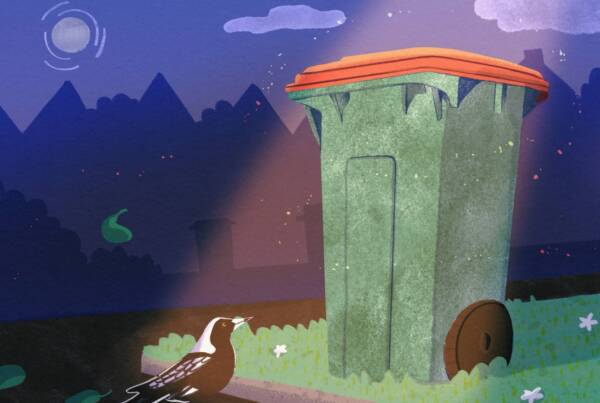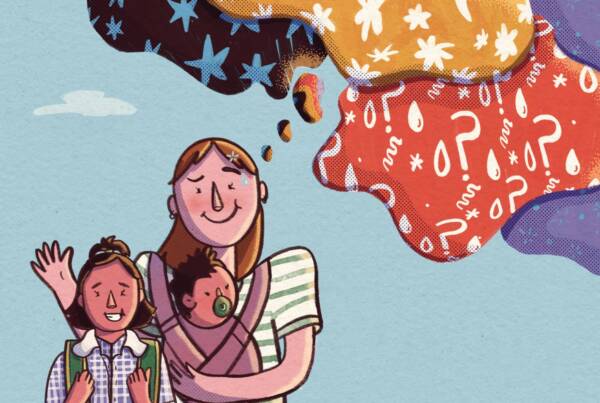Writing by Tess Rouvray // You don’t need to have an intense D&M with everyone you want to tell your story to if it’s not your thing.
Writing by Tess Rouvray
When I was younger and people would tell embarrassing stories about themselves, there were two thoughts that would always enter my mind:
1. Oh my god. If this happened to me I would never tell a soul – I’d take it to my grave.
2. This story is so fun and, instead of judging you, I’m impressed by you (or whatever the juvenile equivalent of this thought was).
I was such a shy, timid and awkward child who had no idea how to deal when something went wrong, laugh at herself, or recover from the shame of humiliating herself. The tiniest of embarrassments would haunt my dreams for months. If any topic of conversation got too close to a previous humiliation of mine, I would feel sick in my stomach, attempt to change the conversation, or sometimes even pretend I needed to go to the somewhere to avoid being reminded of something stupid that I did. Today we know this is a form of social anxiety, but the 90s weren’t so down with mental health.
For years I watched these people around me, these bold, bright, hilarious and interesting people, tell their outrageous and humiliating stories. My envy of their self-confidence was at times all-consuming. That is, until my late teens when I decided I could (maybe) play that game too, and I began telling my own humiliating stories.
It was terrifying at first, but when I told my own stories I found that I had a power I didn’t previously have. I owned my experiences. I had fun with them. They didn’t make me feel sick to my stomach anymore.
Yeah, I fell in a fish pond at a birthday party because it was covered in moss and it looked like a stage and I wanted to stand on it. Yes, I fell for my own answering machine prank – and yes it WAS my voice on the recording. And yes, I did once spectacularly wet myself when I was too scared to use the dark, disgusting and foul-smelling men’s toilets at the tennis club.
The unburdening that followed was real – both emotionally and physically, and I have dedicated much of my life since then to being as open, unburdened and shame-free as possible.
Not too long ago I was lucky enough to attend the School of Life and Dumbo Feather Magazine workshop ‘Storytelling as Therapy.’ As someone who now (after much practice) literally cannot stop talking about the deepest, darkest and – let’s not forget where it all began – the most humiliating – aspects of her life, I was incredibly intrigued by the concept of this workshop.
Storytelling as Therapy was an interactive workshop designed to help find meaning in our life experiences and turn them into a narrative. The exercises and prompts our facilitator, Nathan from Dumbo Feather, gave us to work with were so thought provoking and a joy to explore.
Things I Took Away from This Workshop:
The two layers of storytelling.
1. Situation being told (people involved, facts, sequence of events)
2. Situation being understood (what do those people, facts and events mean to you?)
The second layer is where the magic is. Get in there.
Be Wholehearted
“I think courage is the ability to tell your story. I’ve heard so many stories in my life that I know I’m not alone. Everyone has truths that are hard to tell.” – Brené Brown
For those of you not already familiar with Dr. Brené Brown, she is a research professor at the University of Houston who has spent two decades studying vulnerability, shame, courage and empathy.
Brown found that the people who share their stories fully, struggles and all, without hiding any of it for fear of judgement, actually had the biggest impact with their stories and were living with the greatest satisfaction.
“I realised… these people are all in. They’re just living and loving fully. There’s nothing half-hearted about these folks. They feel the dark emotions wholeheartedly. They feel the joy wholeheartedly.”
Make sure to check out her Ted Talk The Power of Vulnerability for more on this.
It’s easier to speak kindly of others than of ourselves.
Nathan had us do an exercise where we were to write about a particular day from our life. We were to write it as though it were a journal entry, but with one key change – in place of using the “I” pronoun we had to write “you” – so it was as if we were observing ourselves. For example, “You did this….” instead of “I did this…”. We were to describe our thoughts, feelings, actions, etc. from an outside perspective.
This exercise blew almost everyone in the room away. We couldn’t believe the levels of kindness and compassion we had expressed to ourselves from this ‘outsider’ perspective.
I have decided I need to make a point of reflecting on difficult experiences in this way, and when I’m being hard on myself, ask myself what I would tell my best friend in this situation – then tell myself the same.
It’s easier to tell a stranger your dark or awkward stories.
Confiding in a stranger (in the instance of this workshop, the person sitting next to us) has far less repercussions or risk than telling the people who are in our lives. Many of the people around me reported that they had told stories in the workshop they had barely told anybody in the little exercises that day, or said that is was far less scary to do so. They had less fear of judgement or of the story getting spread around their social circles. (This could also explain why so many young women end up having life-changing ‘D&Ms’ in the bathroom of pubs and clubs.)
Redemption vs Contamination
Perhaps the thing I found most fascinating was the research by Professor Dan P. McAdams from Northwestern University. He found that the stories people told about their lives tended to fall into one of two categories: Redemption or Contamination.
Redemption is to make up for or recover from something, and to contaminate is spoil or ruin something by making it unclean.
People who told “redemptive stories “ (stories which transition from bad to good) were more likely to contribute to society and future generations, and more likely to rate their lives as more meaningful.
Those who told “contamination stories” (people who reported their lives going from good to bad) are more likely to be anxious and depressed, and felt that their lives are less meaningful.
“Storytelling is about ownership in the present, learning from the past and becoming in the future.”
Learning from our mistakes and experiences is how those experiences become valuable to us, and when we find the value in a negative experience, it turns that experience into one of reward.
Maybe the thing you learn is painful – like failure, love and loss, betrayal, or disappointment – but if you look closely, your suffering may not have been for nothing. It’s equipped you with extra wisdom and strength points to battle future metaphorical ‘demons’ (or literal demons, I don’t know your life) like a badass.
But it takes the present version of ourselves to take ownership of our stories.
There are many ways to tell a story.
You don’t need to have an intense D&M with everyone you want to tell your story to if it’s not your thing. Create some characters and write a ’fictional’ story or play. Check out some spoken word poetry (Button Poetry is my personal favourite, but YouTube has heaps, and check out your local venues for open mic nights for spoken word poetry.) You can even dance your story if you want to!
Just get out there and own it.










Gorgeously told, Tess. Facebook is full of these stories and it has reminded me that what might feel awkward to hear can often be important for the teller to tell. There is much here about also the art of storyhearing and how we need to get better at this. Discerning where necessary, but also empathetic and open to learning something.
Thanks.